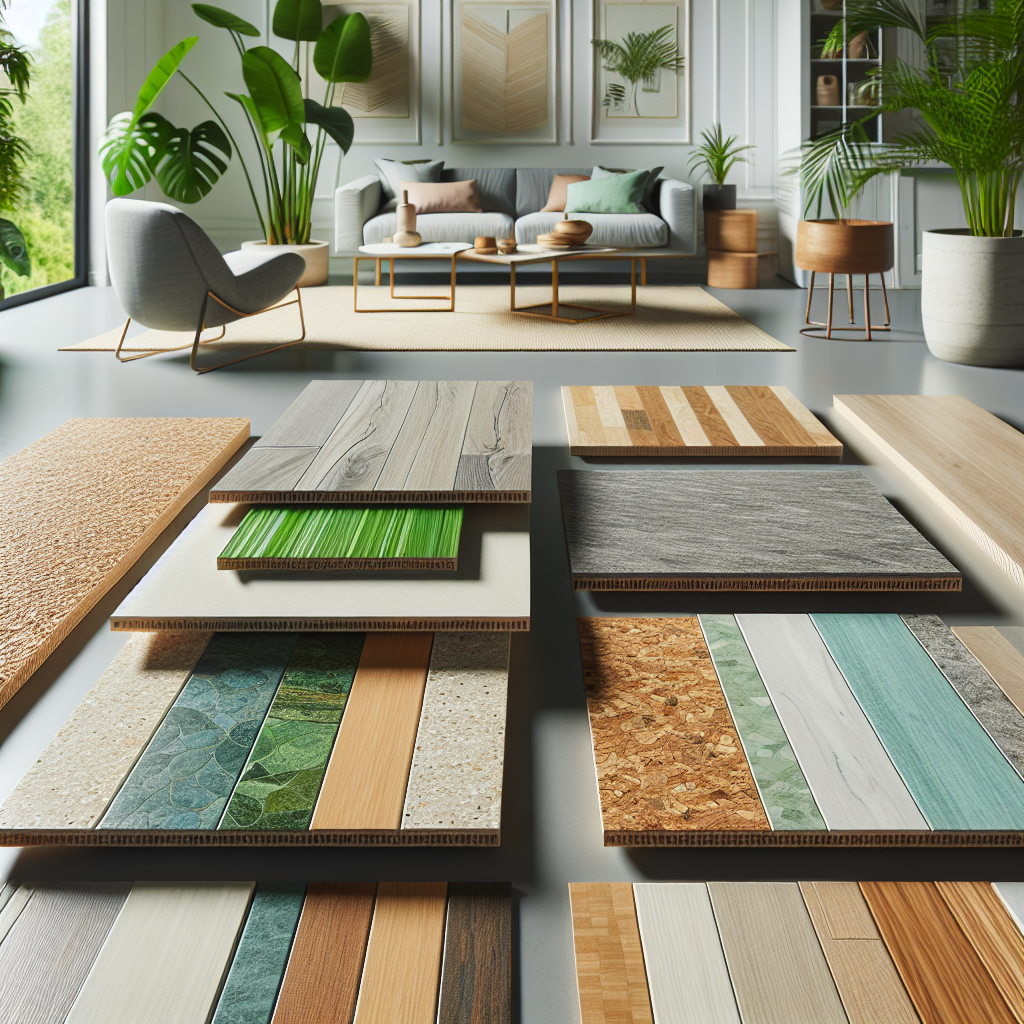In today’s world, where environmental consciousness is becoming increasingly important, homeowners are seeking out ways to make their living spaces both beautiful and sustainable. One of the most impactful decisions you can make in your home is regarding your flooring. Choosing eco-friendly flooring options not only enhances your interior design but also contributes to a healthier planet. In this article, we’ll explore a variety of sustainable flooring options that marry style and environmental responsibility.
Why Choose Eco-Friendly Flooring?
Before diving into specific materials, let’s highlight the benefits of opting for eco-friendly flooring. Traditional flooring options often involve the use of harmful chemicals, non-renewable resources, and can contribute to indoor air pollution. In contrast, eco-friendly flooring options offer a range of environmental, health, and aesthetic benefits:
- Sustainability: Many green flooring materials are made from renewable resources.
- Indoor Air Quality: Eco-friendly options tend to have lower emissions of volatile organic compounds (VOCs), making your home safer for your family.
- Durability: Many sustainable materials are designed to stand the test of time, reducing the need for replacements.
Bamboo Flooring: A Fast-Growing Favorite
Bamboo flooring has gained popularity for good reason. It’s a rapidly renewable resource, maturing in just 3-5 years compared to hardwoods that can take decades to grow. Moreover, it’s exceptionally durable, making it a practical choice for high-traffic areas.
Aesthetic Appeal
Beyond its sustainability benefits, bamboo flooring boasts a distinct and beautiful appearance. Its natural grains and tones can complement a variety of décor styles, from rustic to modern. It’s available in various colors, offering flexibility for homeowners looking to create their dream space.
Care and Maintenance
Maintaining bamboo flooring is relatively easy: regular sweeping and the occasional damp mop keep it looking beautiful. Just be cautious with water, as excessive moisture can damage the floor’s integrity.
Cork Flooring: Nature’s Shock Absorber
Cork is another compelling eco-friendly flooring option that excels in comfort and durability. Sourced from the bark of cork oak trees, which regenerate every 9 years, this flooring material is both sustainable and practical.
Advantages of Cork
Cork flooring is naturally antimicrobial, resistant to mold and mildew, making it perfect for families with allergies. It also provides a cushioned surface, which can be a blessing for those on their feet all day.
Style Versatility
Available in a variety of colors and styles, cork can seamlessly fit into various design schemes, allowing for creativity in your home.
Reclaimed Hardwood: A Second Chance for Trees
Reclaimed hardwood flooring is sourced from old buildings, barns, and other structures, transforming what would have been waste into stunning, functional floors. This option not only helps reduce waste but also gives your home a unique character that new wood simply cannot replicate.
A Unique Story
Every piece of reclaimed hardwood has a history. It’s this story behind the wood that adds character to your home, allowing for a truly personalized aesthetic.
Care Considerations
Reclaimed wood may require special care to enhance its lifespan, such as periodic refinishing. However, this extra effort is worth it for the sustainability and unique charm it brings.
Linoleum: A Stylish Natural Choice
Often confused with vinyl, linoleum is another eco-friendly flooring option that is natural, biodegradable, and sustainable. Made from materials like linseed oil, cork dust, and wood flour, linoleum is enjoying a resurgence in popularity due to its durability and an array of colors and patterns.
Durability and Longevity
Linoleum is resistant to scratches and dents, making it ideal for high-traffic areas. When properly maintained, it can last for decades, proving that eco-friendly can also be highly functional.
Conclusion: Making the Right Choice for Your Home
Choosing eco-friendly flooring options for your sustainable home is a significant step toward reducing your environmental impact while enhancing your living space. From bamboo and cork to reclaimed hardwood and linoleum, these materials offer a combination of beauty, durability, and sustainability.
As you embark on your flooring journey, consider your lifestyle, aesthetic preferences, and commitment to sustainability. Not only will you help to protect the environment, but you’ll also create a home that reflects your values and style.
Let your home be a testament to the idea that sustainability and beauty can coexist, proving that environmentally friendly choices lead to a healthier planet as well as a happier home.


